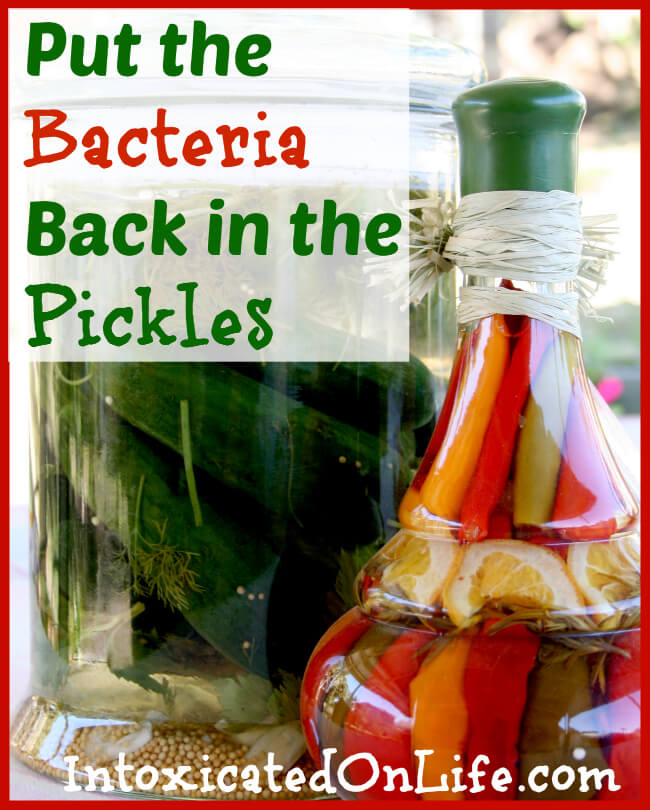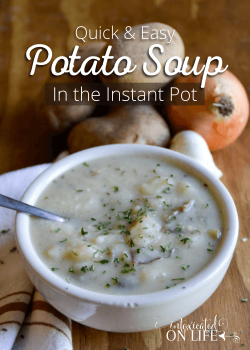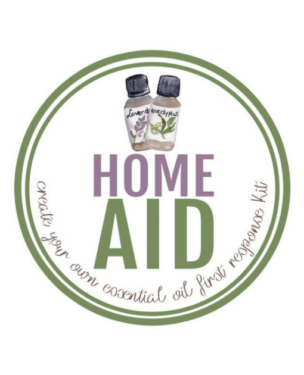Bacteria in your food? Why yes. Bacteria in our food (the right kind anyways) is actually very good for us. Many of the foods that have traditionally been fermented, such as pickles and sauerkraut, are now made with vinegar. Producers ship them off to your local supermarket, devoid of the beneficial bacteria necessary for gut health. There, workers place them on the shelves for you to purchase. But you won’t get the health benefits from them that you will from eating fermented foods with live bacteria!

What Does Fermentation Have to do with Bacteria?
There are a number of foods and beverages that can be fermented: yogurt, kefir, sauerkraut, pickles, salsa, and some more exotic things too! The fermentation process causes bacteria to feed on the sugar and starch in the food which in turn creates lactic acid.
Yeah, it sounds a little bit frightening doesn’t it? Bacteria growing on your food! Yikes. But hear me out. This process inhibits harmful bacteria from growing and is a food preservation method. That’s right: your food will last longer when you ferment it.
Fermented foods are the best and most potent source of beneficial bacteria.
7 Reasons You Should Try Eating Fermented Foods
Aside from tasting super yummy, there are a lot of reasons to eat fermented (aka bacteria-laden) foods.
- Fermented foods restore the balance of our gut flora. Balancing the bacteria in our gut can improve overall health, aid in digestion, and improve immunity.
- There is some evidence that consumption of fermented foods offers protection from colon cancer.1
- Consumption of fermented foods is beneficial for childhood dental health and reduction of cavities.2
- Fermented foods make some vitamins more bio-available. That is, the vitamins in the food are much easier for our bodies to use. The fermented version of a food may indeed, be more healthful, than the raw version of that same food.3 & 4
- Fermenting foods is a great preservation method. Foods that are fermented will last much longer than those that are not. Milk only lasts days in the refrigerator. In comparison, its fermented counterparts yogurt and kefir last weeks in the refrigerator.
- When fermenting milk the lactose content is broken down. Real fermented yogurt has about half the carbs of the milk it’s made from. Many people that cannot tolerate milk are able to tolerate real yogurt or kefir because the lactose has been sufficiently broken down.
- If you’re a grain eater, fermenting can reduce phytates, gluten, and lectin in grains. So, if you’re going to eat bread be sure to use traditional sourdough preparation methods to help reduce the anti-nutrients.
We’ll be talking some more about fermented foods throughout this month.
Have you tried eating fermented foods? What are your favorite fermented foods? What would you like to try?
Check out these posts for more information and recipes for fermented foods:
Sources
- Protective role of probiotics and prebiotics in colon cancer.
- Effect of long-term consumption of a probiotic bacterium, Lactobacillus rhamnosus GG, in milk on dental caries and caries risk in children.
- Vitamin profiles of kefirs made from milks of different species
- Nutritional Significance of Fermented Foods










I think one of my new year’s resolutions is going to be to eat cultured foods at least a couple of times a day!
Great post. WE like fermented dill pickles quite a bit here and still have some I made back in September that we are finishing up.